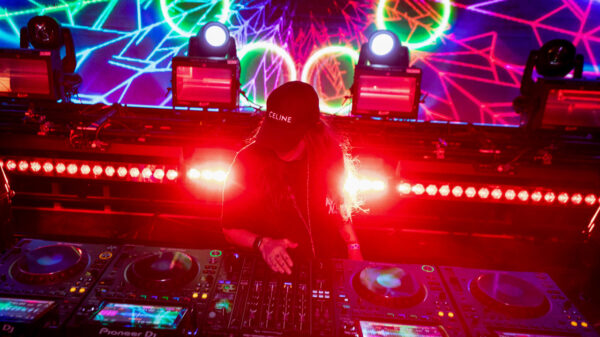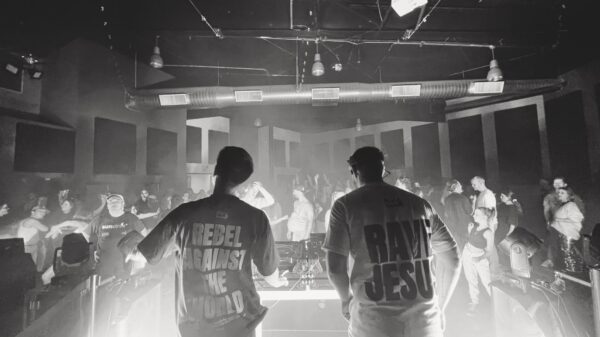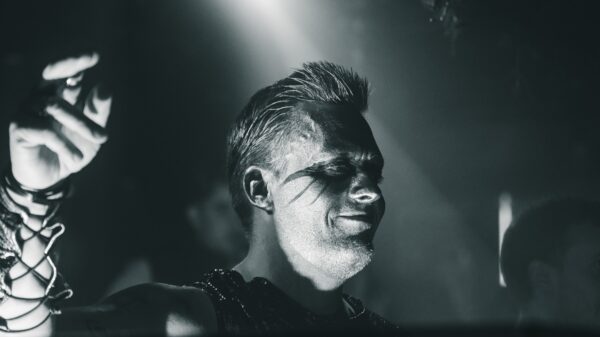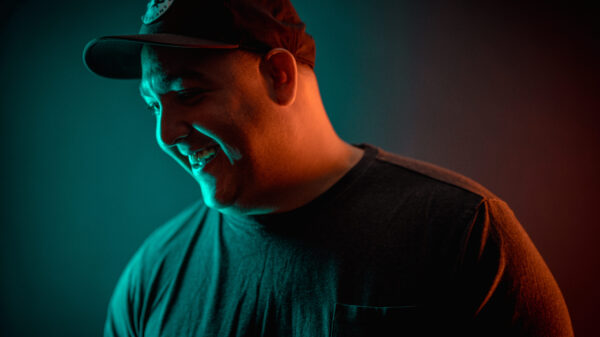“Oh, so you listen to techno.”
“Dubstep sounds like robots having sex.”
“They don’t even play their own instruments.”
“How hard is it to make ‘un-ts-un-ts-un-ts?’”
“All that electronic music sounds the same.”
Your reaction to these statements on electronic music usually depends on whether or not you have been the one to utter or hear these statements. Saying any of the above would seem to be a sign of your aversion towards the music whilst hearing them probably indicates a positive view of the music and therefore, a view of these proclamations as cringe-worthy. To put it simply: electronic music is divisive, and much like other pop music movements that came before, it is, unfortunately, becoming infamous for its perceived lack of authenticity, effort, and overall intelligence. A lack of understanding and an accepted level of cultural unfamiliarity have empowered the detractors of modern electronic dance music (EDM) with the false assumption that the artists, productions, and fans are simply practicing nothing more than Dionysian frivolity even as innumerable productions are created every year with subtle, yet impactful, artistic merit. The record needs to be set straight.
(Quick disclaimer: it isn’t without thought that the term EDM is used. It is simply being used as an overarching term to describe the music colloquially thought of as modern music primarily composed/produced on electronic equipment/devices/instruments that is heavily rhythmic in nature such as house, techno, dubstep, electro, trance, trap, etc. If you prefer a different term, please forgive its use here.)
While no one was able to predict the massive impact that the rise EDM would have on pop culture, it should have been foreseen. Since the turn of the 21st century, popular music had been slowly separating into mechanical bubblegum pop ballads/anthems and overly introspective, needlessly elaborate indie rock; think of Miley Cyrus vs. Arcade Fire, for example. While both sides of the aisle have something to express and emote, individually they could not completely fulfill a desire for both intellectual and careless expression, leaving a void in between them; a void needing to be filled by a style of music that would speak to our primal desire to physically express ourselves as well as cause moments of cerebral fulfillment and inspiration. While EDM can most certainly be said to favor the former, as dance is inherent in the name (one of the big drawbacks of the epithet), its understated intellect is an aspect that has largely gone unnoticed due to EDMs relatively recent entry into musical culture and the subtle nature of where this intellect is found.
Since the 1960’s, a majority of pop musicians, including those that have been seen as sage creators, have not so much been musicians as they have been gifted lyricists with a musical backing. Their skill and fame mostly lies within the stories they tell, the poetry they spin, the social commentary that champions causes of real concern, but not the music in and of itself. The creativity and profundity of the lyrics from artists like Bob Dylan, Neil Young, and Bon Iver cannot be denied but their music is generally simple, melodically basic, and nothing more than a vehicle for the message of the lyrics. Today, EDM takes the exact opposite approach in being more enamored with timbre, structure, and groove than lyrical content. Listeners are more interested in how a producer can manipulate sound, instead of the words that are proclaimed over the top of the sound. Whether it’s an interest in how synthesizers physically produce their sounds or how to create fully orchestrated songs with nothing but a computer, it is in this interest in sound manipulation that EDM can be said to hide its treasures of intellectualism, an interest shared with that of classical composers. Plenty of examples exist to show this hidden creativity:
In Knife Party’s “Bonfire,” the famous four note rhythmic pattern found throughout Beethoven’s 5th symphony is never absent for more than few seconds but appears in many different forms in the horns, drums, lyrics, and Synth leads throughout a song that seamlessly combines hardstyle, moombahton, electro and dubstep.
MSTRKRFT’s “Click Click” begins with two distinct synth lines that combine together in a single melodic pattern called a kotekan found throughout Balinese gamelan music, a style of music that influenced impressionistic classical composers such as Claude Debussy.
DHS’ “House of God” uses slightly dissonant and chromatic notes to point out the disturbing nature of a pastor on TV needing to ask his constituents for money to “beautify the House of God together,” a message that could have the complete opposite effect with a simple change in tonality.
In Green Velvet’s eight minute remix of The Presets’ “Youth in Trouble,” a non-changing kick drum is ever-present but not always at the forefront of the sound, a nod to the 20th century, minimalistic approaches of Terry Riley’s “In C” and Maurice Ravel’s “Bolero” while still being a song that is meant to be pop music that is danced to.
Daft Punk’s “Contact” can be seen as a giant, allegorical indictment of the “YOLO-EDM” culture beginning with a recording from the Apollo 17 mission in which the last line is, “I don’t know whether that does you any good, but there’s something out there,” saying that there is plenty of music out there, but that doesn’t mean it’s worth any of your time. The song has a filter sweep that rises for four minutes, occasionally pausing on augmented intervals, that abruptly ends with a steady bass drum in the background as if the song had launched you into the future and we are hearing the EDM past in our auditory rearview mirror. It’s only appropriate that this song ends the album as it looks toward the future.
EDM is also blessed with many virtuosic type instrumentalists such as AraabMuzik, and Andy C. It may be hard to think of them as virtuosos because the instruments they play are not as culturally pervasive. Even with society being generally unacquainted with what they are playing, it does not mean that the talent they display is any less impressive than a Les Paul wielding guitarist simply because the skill is not as apparent or as easily elucidated. There are plenty of examples of undiscovered talent that go relatively unnoticed due to the mostly unknown nature of EDM composition and instrumentation.
In contrast, one of the most well known and common parts of most modern EDM is some form of a “drop.” It’s the part of EDM that is most satirized and poked fun at as it has come to define a majority of the songs in the modern EDM canon. The drop is a transition from one structural form to another usually with aggressive changes in the rhythm, timbre, and bass. What is the drop but an evolution of the individual surprise fortissimo note in Haydn’s “Surprise Symphony” meant to jostle and, well, surprise the audience?
The list goes on.
You may disagree vehemently with many of the above examples as nothing more than a fan of EDM searching for significance in the music he listens to. In a sense, that is absolutely correct. However, many of the denigrating remarks leveled at these artists are nothing more than attacks on their chosen medium and not so much the effort put into producing what they consider art. To put it differently, how much different would you read the above cases if the names of the artists were changed to LED Zeppelin, Nirvana or Radiohead?
At the heart of my presentation of this evidence, is the hope that EDM can be recognized alongside all other types of pop music as a legitimate form of artistic conveyance; it may just take time to find relevance. Granted, it must be noted that a majority of EDM being spewed today is not exactly highbrow in its musical merit. Yet, every musical movement begins with rudimentary foundations and widely accepted negative criticism but eventually rises above, much to the ire of the previous generation, to become praised and accepted. As a parallel, John Dancy, an NBC journalist once proclaimed that the acts at the 1967 Monterey Pop Festival (including The Grateful Dead, Jimi Hendrix, and Simon & Garfunkel) were “a huge raspberry to everyone over 30.” Now, the grand irony is that finding devoted fans under 30 for these acts are few and far between.
If you don’t enjoy EDM, great; no one should ever condescendingly tell you why you should like any music that you don’t, as musical opinions are as varied as the people who live on this planet. The change needs to come in how EDM is seen in culture as whole. There are many forms of art that can be appreciated for their effort, input, and merit while not necessarily be enjoyed without exception. EDM is readily recognized as a means to make us dance, but it’s the unseen intellect that has come in the form of knowledgeable inserts, homages, and allusions that need to be acknowledged. It’s time for a sea change in popular music from the fixated idea that, as the writer Jean Cocteau once said, “Dance must express nothing” into the idea that dance music has the capability of expressing anything and everything right alongside the carefree intoxication of EDM induced dancing.
Whether you love or hate EDM, you shouldn't deny it's artistic value.














